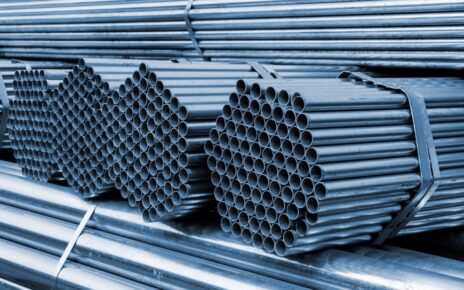Inconel 601, a high-nickel alloy with the addition of chromium and aluminum, is prized for its exceptional resistance to high-temperature corrosion. Inconel 601 foil, a thin, flat sheet of this alloy, plays a vital role in various industries where extreme temperatures and corrosive environments are common challenges. This article delves into the world of Inconel 601 foil price fluctuations, examining the factors that drive these changes, their impact on different industries, and strategies for navigating the dynamic market.
Understanding Inconel 601 Foil
Before delving into the price fluctuations of Inconel 601 foil, it’s essential to understand the composition and properties of this remarkable material.
Composition:
Inconel 601 is primarily composed of the following key elements:
- Nickel (Ni): About 58% of the alloy
- Chromium (Cr): Approximately 22%
- Aluminum (Al): Around 1.4%
- Iron (Fe): Less than 2.5%
- Other trace elements, Including sulfur, manganese, and carbon, are based on specific manufacturing requirements.
Properties:
Inconel 601 foil exhibits several remarkable properties, making it a preferred choice for various high-temperature and corrosive applications:
- High-Temperature Resistance: Inconel 601 foil maintains its strength and corrosion resistance at temperatures exceeding 2000°F (1093°C).
- Corrosion Resistance: It is highly resistant to both reducing and oxidizing conditions, making it suitable for use in various corrosive environments.
- Oxidation Resistance: The alloy resists oxidation, even at elevated temperatures, which is essential for applications exposed to hot gases, steam, and combustion products.
- Strength and Durability: Inconel 601 foil provides good mechanical strength and toughness, ensuring its longevity in high-stress and high-temperature applications.
- Weldability: It can be readily welded, allowing for the fabrication of complex structures and equipment.
Price Determinants for Inconel 601 Foil
The pricing of Inconel 601 foil is subject to various determinants that contribute to its fluctuations. Understanding these factors is essential for both suppliers and consumers to make informed decisions. Key determinants affecting the pricing of Inconel 601 foil include:
- Raw Material Costs: The price of nickel, chromium, aluminum, and other alloying elements directly impacts the cost of manufacturing Inconel 601 foil. These raw material costs are subject to fluctuations in global commodity markets.
- Market Demand and Supply: The balance between the demand for Inconel 601 foil and its supply greatly influences its price. When demand outstrips supply, prices tend to rise, and vice versa.
- Global Economic Conditions: The overall state of the economy, including inflation rates and economic growth, can influence the price of Inconel 601 foil. Economic downturns can lead to reduced demand, while periods of growth can drive demand and price increases.
- Currency Exchange Rates: As Inconel 601 foil is traded globally, currency exchange rates can impact pricing. A strong currency in which the material is traded can make it more expensive for foreign buyers.
- Industry Regulations: Environmental regulations, tariffs, and trade policies can affect the production and pricing of Inconel 601 foil. Stringent environmental standards may lead to additional production costs, while trade disputes and tariffs can disrupt the supply chain and impact pricing.
- Technological Advancements: Innovations in the production processes and manufacturing technologies can impact the cost structure of Inconel 601 foil. More efficient methods can lower production costs and potentially lead to price reductions.
Impact on Different Industries
Inconel 601 foil finds applications in various industries due to its high-temperature and corrosion resistance properties. The price fluctuations of Inconel 601 foil have distinct impacts on these sectors:
- Aerospace Industry: The aerospace industry relies on Inconel 601 foil for critical components exposed to high-temperature and corrosive conditions, such as aircraft engines. Price fluctuations can affect production costs for manufacturers and potentially impact the pricing of aerospace components.
- Petrochemical Sector: In the petrochemical industry, Inconel 601 foil is used in furnace components, radiant tubes, and reformer tubes. Price fluctuations can impact the cost of equipment and maintenance for petrochemical plants.
- Power Generation: Power plants utilize Inconel 601 foil in equipment like heat exchangers, steam generators, and flue gas desulfurization systems. Price fluctuations can affect the cost of power generation equipment and maintenance.
- Chemical Processing: The chemical processing industry employs Inconel 601 foil for reactors, vessels, and piping that handle corrosive chemicals at high temperatures. Fluctuations in foil prices can influence production costs for chemical manufacturers.
- Heat Treatment Furnaces: Inconel 601 foil is used in the construction of heat treatment furnaces, where precise temperature control is essential. Price fluctuations can impact the cost of furnace construction and maintenance.
- Nuclear Reactors: Inconel 601 foil is utilized in nuclear reactors for applications requiring resistance to high radiation, high-temperature water, and steam. Price fluctuations can impact the cost of nuclear reactor components.
Navigating Inconel 601 Foil Price Fluctuations
Given the dynamic nature of Inconel 601 foil pricing, both suppliers and consumers must employ effective strategies to navigate these fluctuations:
- Market Analysis: Stay informed about market conditions, trends, and potential price fluctuations. Understanding the market dynamics can help in making informed purchasing decisions.
- Price Negotiation: Negotiate pricing terms and seek competitive offers from different suppliers to secure the most cost-effective option without compromising quality.
- Bulk Purchasing: Consider bulk purchasing or entering into long-term supply contracts when market conditions are favorable. Bulk orders often result in lower unit prices.
- Customization: When specific properties or dimensions are needed, communicate these requirements with the supplier to obtain accurate price quotes.
- Supplier Selection: Choose a reputable supplier with a track record of delivering quality Inconel 601 foil. Evaluate suppliers based on their reliability, customer service, and ability to meet delivery timelines.
- Currency Considerations: Be mindful of currency exchange rates, especially when dealing with foreign suppliers. Exchange rate fluctuations can affect the overall cost of the material.
Conclusion
Inconel 601 foil’s unique combination of high-temperature resistance and corrosion resistance makes it an invaluable material in industries where extreme conditions are a constant challenge. Understanding the factors influencing its price fluctuations and their impact on different sectors is crucial for those involved in its acquisition and use. By staying informed about market trends and employing effective procurement strategies, both suppliers and consumers can navigate the dynamic pricing landscape of Inconel 601 foil to optimize their operations and manage costs effectively.




